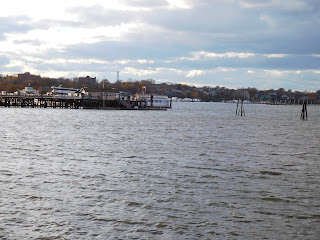Pretzel. Taco. Pringle.
What do they have in common?
They're all foods, of course. While most people wouldn't call them "health" or even "healthy" foods, tacos can at least be made to have nutritional value, and pretzels don't have to be white flour concoctions that merely serve as conveyances for salt. Now, as to whether Pringles can be made so that they have even the pretense of not being unhealthy, I don't know.
So what else do the pretzel, taco and Pringle have in common? Well, all have been used as descriptors for something that can ruin any cyclist's day.
| From The Taco Cleanse |
When I first caught "cycling fever" four decades ago, a wheel that was bent and twisted into shapes that even David Smith couldn't have fashioned was said to have been "pretzeled". (I'm not sure of whether it's spelled with one or two "l"'s. ) The term was even used in print: I recall seeing it in cycling magazines and books published around that time.
| From That's What She Said |
Also around that time, the term "pretzel logic" was often used, perhaps inspired by the popular Steely Dan song:
I still hear that term from time to time. I can't recall, however, the last time I heard of a "pretzeled" wheel. Somewhere along the way, that expression gave way to another phrase beginning with an ersatz past-participle adjective (Now why didn't I name my band "The Ersatz Adjectives"? It couldn't have been any worse than "The Past Participles"?). You may still be using it: Taco'ed.
 |
| From Instructables |
It's the term I'm still using. In fact, in a comment on a "Retrogrouch" post, I mentioned that a wheel I rode briefly "spontaneously tacoed" when I was riding one day.
| From Iowa Girl Eats. |
Until that day, I didn't know that the Fiamme Ergal rims were prone to crack around the spoke holes--on the inner part of the rim, where the tire is mounted (and glued). More important, I didn't know that mine were deteriorating in the same way until I inspected the wheel after it folded itself under me. I soon learned that other cyclists who rode Ergals--which, to this day, remain among the lightest tubular rims ever produced--had similar experiences. At least I could reassure myself the fate of my rim had nothing to do with my wheelbuilding skills, such as they were. Or from eating too many tacos. Or pretzels.
| From Urban Legends |
Or Pringles. Actually, I haven't eaten many Pringles: I never really cared for them. Somehow, though, they seem to be displacing tacos in the lexicon for wheels collapsed beyond all hope of repair. While it works visually, I think the sounds of "taco" and "pretzel" are more effective at conveying the wreckage.
Isn't it interesting that collapsed wheels are described with food metaphors? To my knowledge, no other bike-related malady is depicted that way. I wonder why.






































